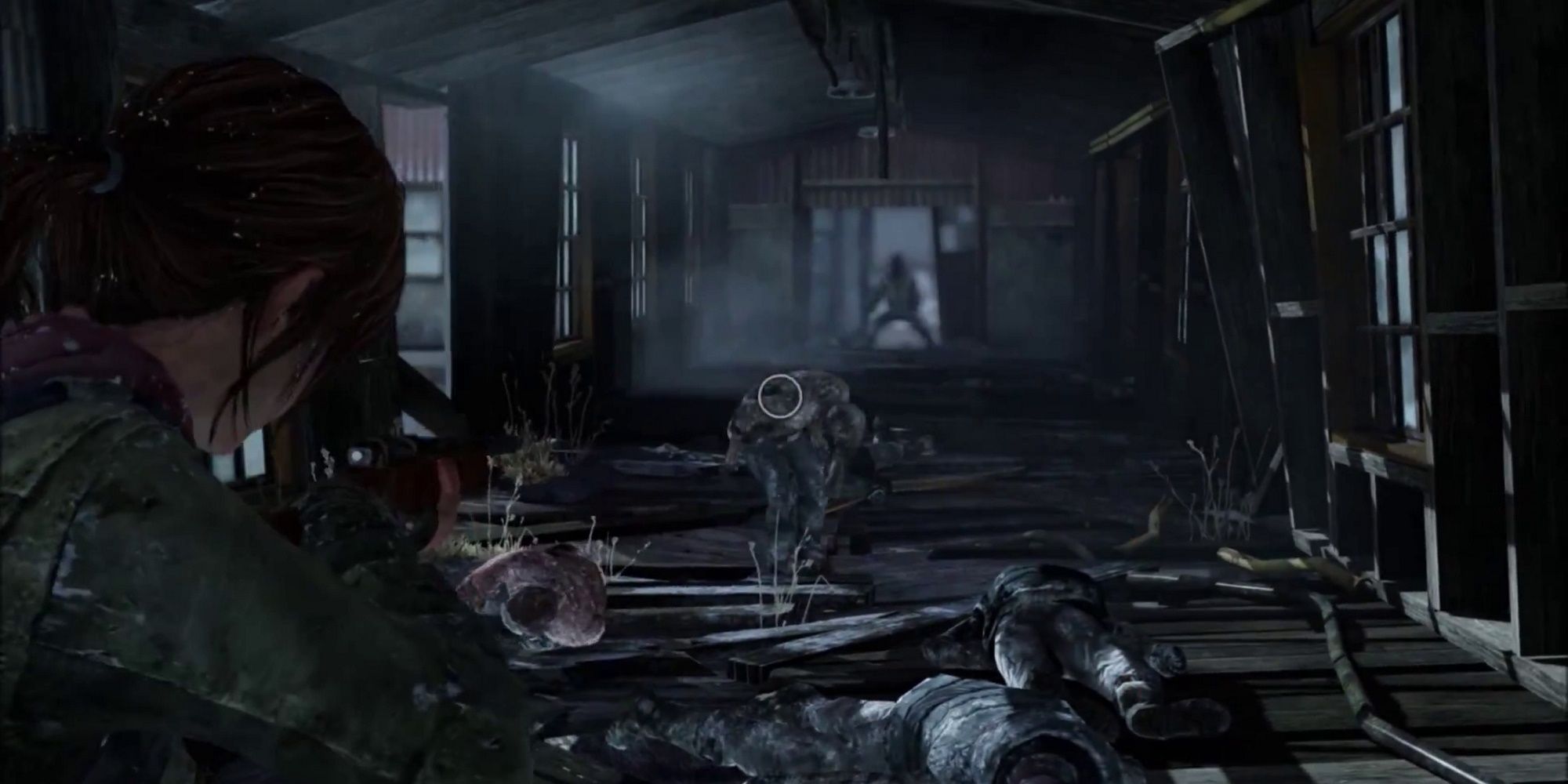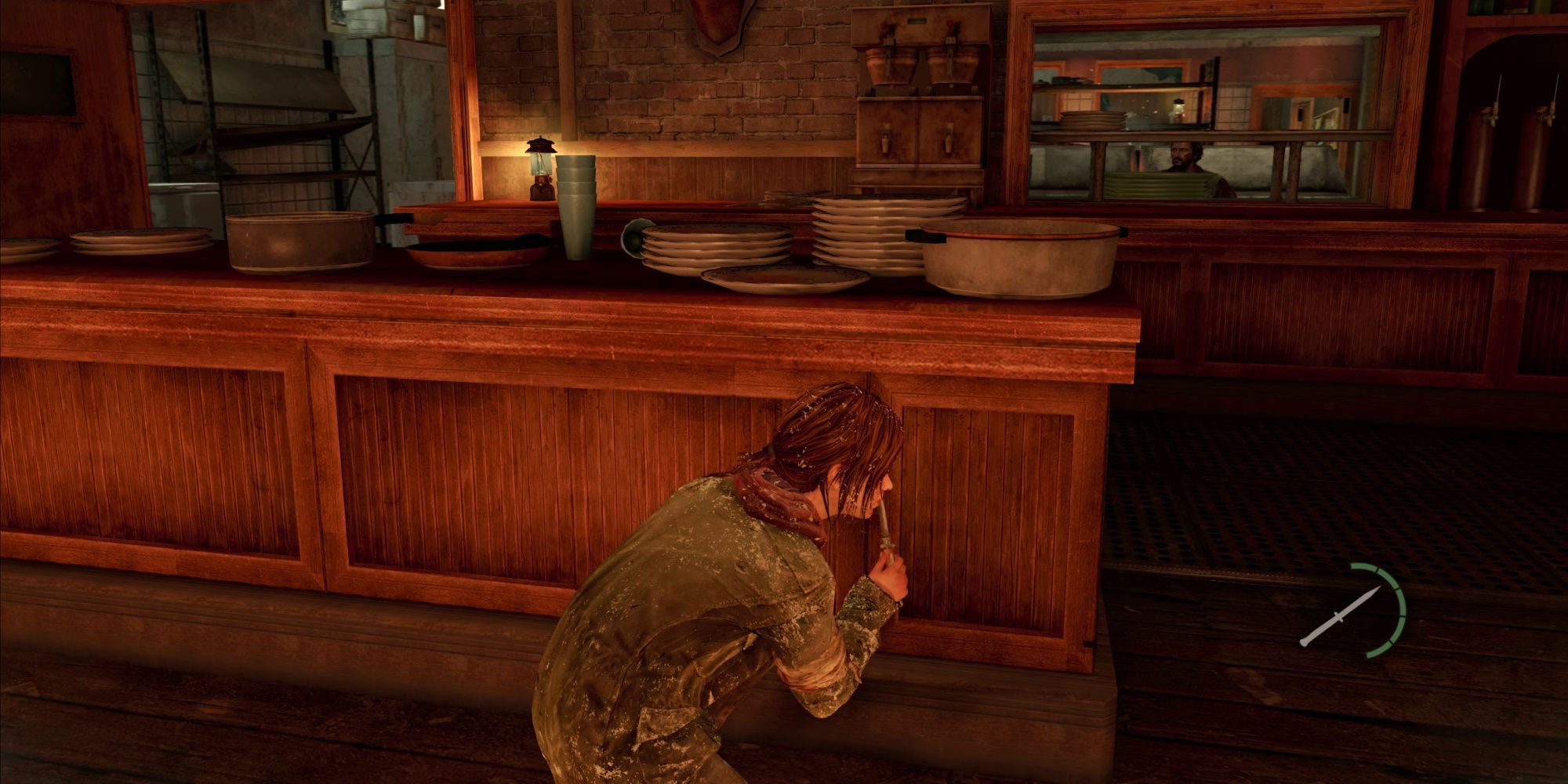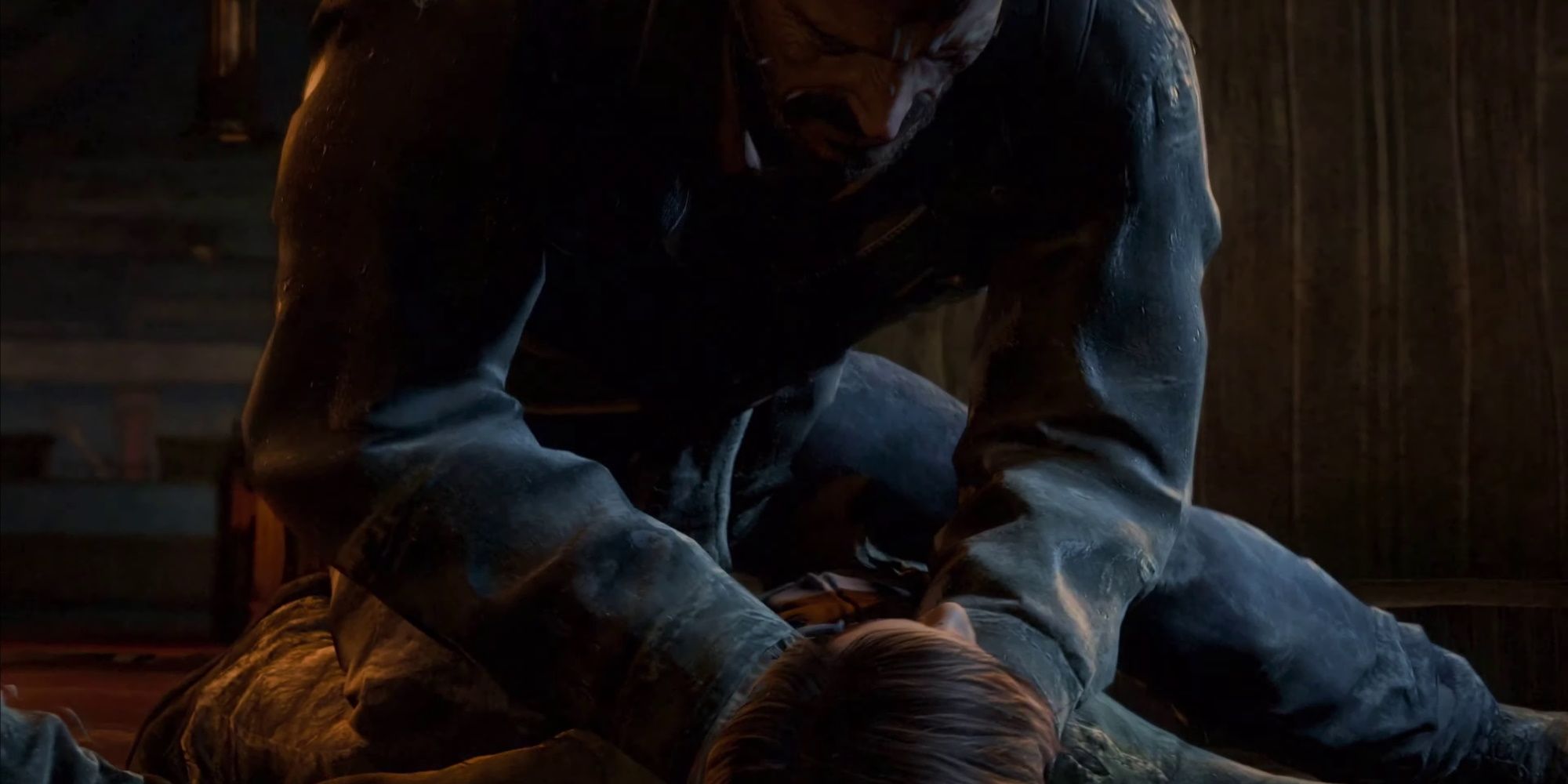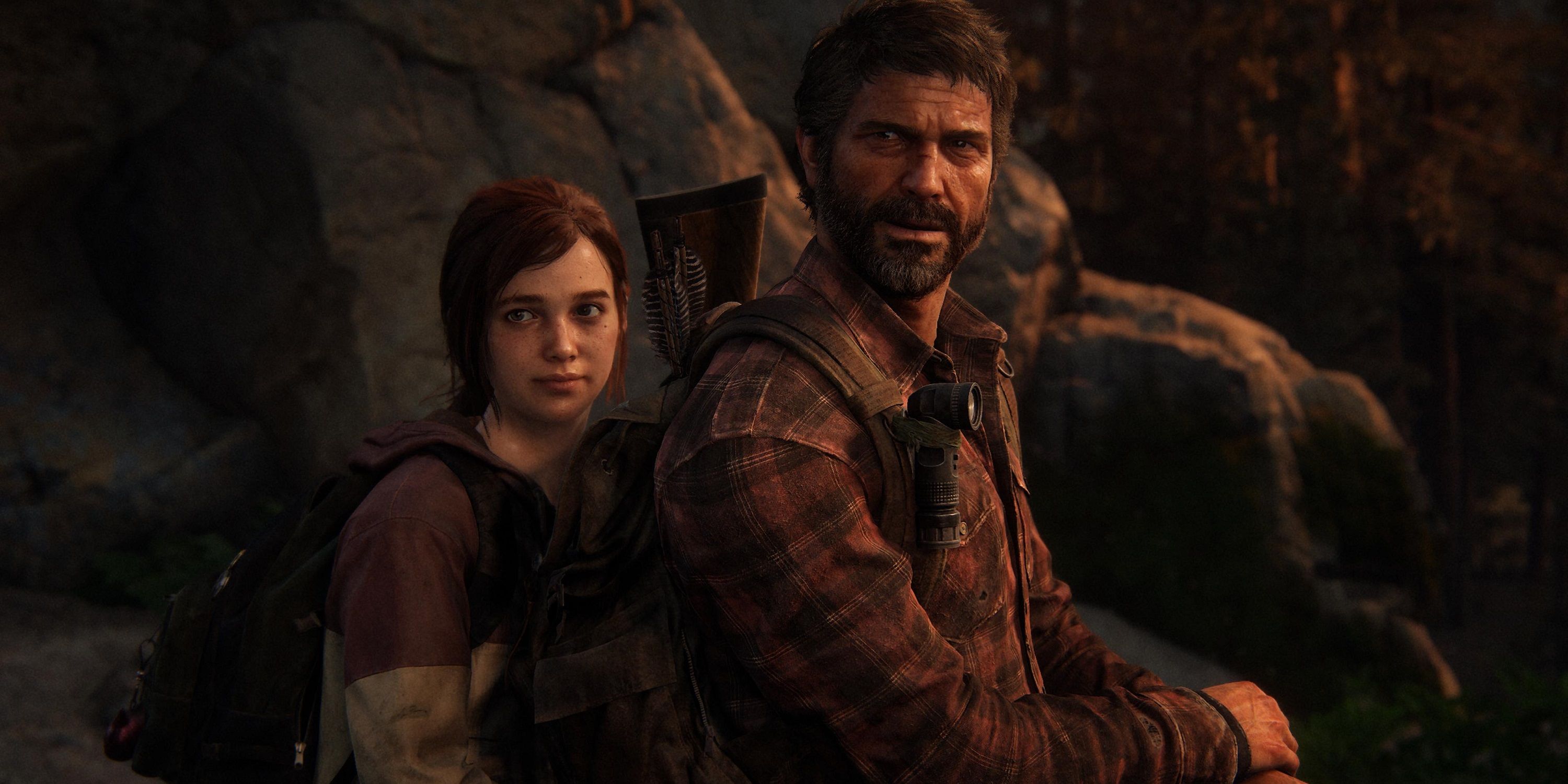Naughty Dog aren’t typically known for speaking with gameplay, which is kind of unconventional. For one of the most well-known studios in the industry, they rely a lot on cinematic language instead. The gameplay in some of their games can be so pedestrian that when you strip away the presentation, it’s not unreasonable to get bored. For every jaw-droppingly rendered cutscene with great acting, you have another box puzzle or shoot-out. This is a massively missed opportunity, because there’s one key moment, all the way back in 2013, that demonstrates what Naughty Dog could accomplish. I'm talking about the Winter chapter of the original The Last of Us.
Winter is arguably the real climax of The Last of Us. It’s the culmination of everything we’ve seen before taken to its height. We’ve seen hostile bandit groups, a few kind survivors, and plenty of infected. We already know that Ellie, our young charge we’re guiding across post-apocalyptic America, is immune to the infection but otherwise fragile. It’s always been on grizzled “Sad Dad” Joel to shoulder responsibility in combat, even as Ellie tries to help.
Except now Joel’s sick, infected from falling on a steel rod, and it’s up to Ellie to provide food while they’re sheltered in an abandoned house. Rabbits are providing some nutrition, but small game is nothing compared to the healthy, proud deer she spots in an open clearing. It’s at this moment, after hours of near Wii-era Nintendo levels of hand holding, Naughty Dog finally lets players free.
Everything in this sequence is dynamically player-driven. You can use the listen mode to track the deer, but also its tracks left in the snow. There’s nothing else going on, so every real-time impression stays as you stalk your providential prey. Every control input you’ve learned regarding stealth is recontextualized. You’re not repeating the same “neck-stabbing, toss stone to distract” routine. Despite only being able to flee, your opponent is smart, and able to detect you if you aren’t careful. There’s no incentive for it to charge you, putting its own preservation first.
Your only weapon is a bow and arrow, and nearly the entire heads-up display is removed as well.
This sequence can last less than a minute, or it can last several. There are whole sections of this micro-sandbox you might never see if you’re a great shot. Skill and patience are equally rewarded, yet those who struggle aren’t left behind. Every shot makes the buck bleed, leaving a trail as it slows, staggering about from its wounds. The first shot is the hardest, and with every renewed success, you and Ellie are that much closer to victory.
This all ties into what we know about Ellie. Even if you couldn't care less about Joel, odds are you’ll have been endeared to Ellie and want to see her survive. She’s compassionate, smart beyond her years, and can fend for herself. After hours of her as an AI companion, what we’ve been told in cutscenes and scripted sequences is tangible.
Despite using the same controls as Joel, Ellie feels distinctly her own character. Throughout the rest of this chapter, Ellie can do infinite stealth knife takedowns, but struggles in a straight-up fist fight. She lacks close-range weapons but is an excellent sniper, even when cornered. She’s fast on her feet but has less health. Every advantage comes with a reminder that you’re no longer that generic, gruff male protagonist. You’re playing as a young girl trying to survive.
That struggle grows more complicated further in. After you mortally wound the buck, it runs off and naturally leads you to the level’s exit into the next stage. Here Ellie meets David, the leader of a group of survivors with an unpleasant secret of their own. He’s willing to trade her medicine that can cure Joel for the deer meat.
Here, the writing is just as surprising. This entire story beat stands on its own, not relying on previous context or heavy foreshadowing. The figurative knife up David’s sleeve is subtly revealed over the course of the remaining chapter. Every interaction before the reveal is genuine and human, which is fortunate, as you both have to fend off a horde of infected who catch the scent of the fresh deer kill.
The entire dynamic The Last of Us operates around is flipped, with Ellie free to make use of what’s lying around the level while David takes point as the adult in the room. She might not trust him, but Ellie has to rely on him. David is a damn good shot, and even saves you if you get caught by an infected. All the while, you’re thrown a sizable amount of resources in each room. Instead of limiting you to what the designers want, time is what’s most valuable, forcing you to make rapid-fire decisions. The perfect opposite to the deer hunt.
When the Boiler mini-boss arrives, you’re running low on supplies, which forces you to improvise. Every system in The Last of Us culminates here into a disturbing ballet of near-death experiences. The tension is amplified to an immense degree purely through the interlocking systems and instinctual player behavior. There’s no need for exploding trains, or dangling out the back of a crashing cargo plane. All good stakes need are limited resources, and a seemingly unending threat barreling at a player who has just enough room to breathe.
Afterwards, The Last of Us relies more on traditional Naughty Dog tropes. Scripted set-pieces of sniping, sneaking, and fleeing, yet the levels retain some of this open-ended design. The inclusion of a blinding blizzard is welcome as well. Nothing tops the very end though, when we finally confront David again. This is where Winter achieves its crescendo.
By this point, Ellie knows that David’s a cannibal. Worse, he’s a cannibal with an inflated, self-righteous ego. Ellie’s managed to break free of her cage, but is trapped inside a diner with David. Here we have another hunt, with the balance inverted. David can and will gut you if you try to face him head-on. Now instead of just staying silent, you have to distract him, using every instinct honed while stalking the deer.
All the while, David’s the one giving you additional prompts now. Saying things, making noises, and breathing heavy. Once again, how quickly this all plays out is down to the player, but speed carries a newfound risk. Rather than a chance of simply prolonging the fight, you run the risk of becoming prey.
In the end, Joel doesn’t come in and triumphantly save the day. It’s down to Ellie to be her own guardian, having proven herself fully through her series of trials. She’s the one who kills David. She’s the one with literal blood on her hands. Everything is driven by Ellie and her actions. She’s gone through all these adult situations and survived.
That’s what Winter represents: the culmination of Ellie growing up. Were we given the option to not see Joel’s rash decisions through in the finale, Winter would still serve as a perfectly reasonable conclusion. Everything ties together perfectly. It’s harrowing without feeling exploitative, speaking volumes to Ellie’s arc without getting in your face about it. And in that final breath when the danger has passed, it grants you a wave of relief that only the best survival-horror games can.
This is all the more important to consider in the framing of where Naughty Dog has gone since. The divisiveness of The Last of Us Part II, with its problematic framing and overreliance on shock. Uncharted grasping at similar moments of player agency but struggling where even more linear games like Max Payne 3 succeeded. It’s reasonable to say that Naughty Dog are still trying to figure out how to let players have a say in how they make their way through their games, yet here, for one shining chapter, they actually achieved it.
Winter is proof that leaving your audience with a profound journey doesn’t demand hundreds of hours of content or keeping them pulled along on a tight string. Sometimes all it takes is giving them a series of simple but intense problems with multiple solutions. From there, they’ll take the reins and tell the tale, whether they realize it or not.

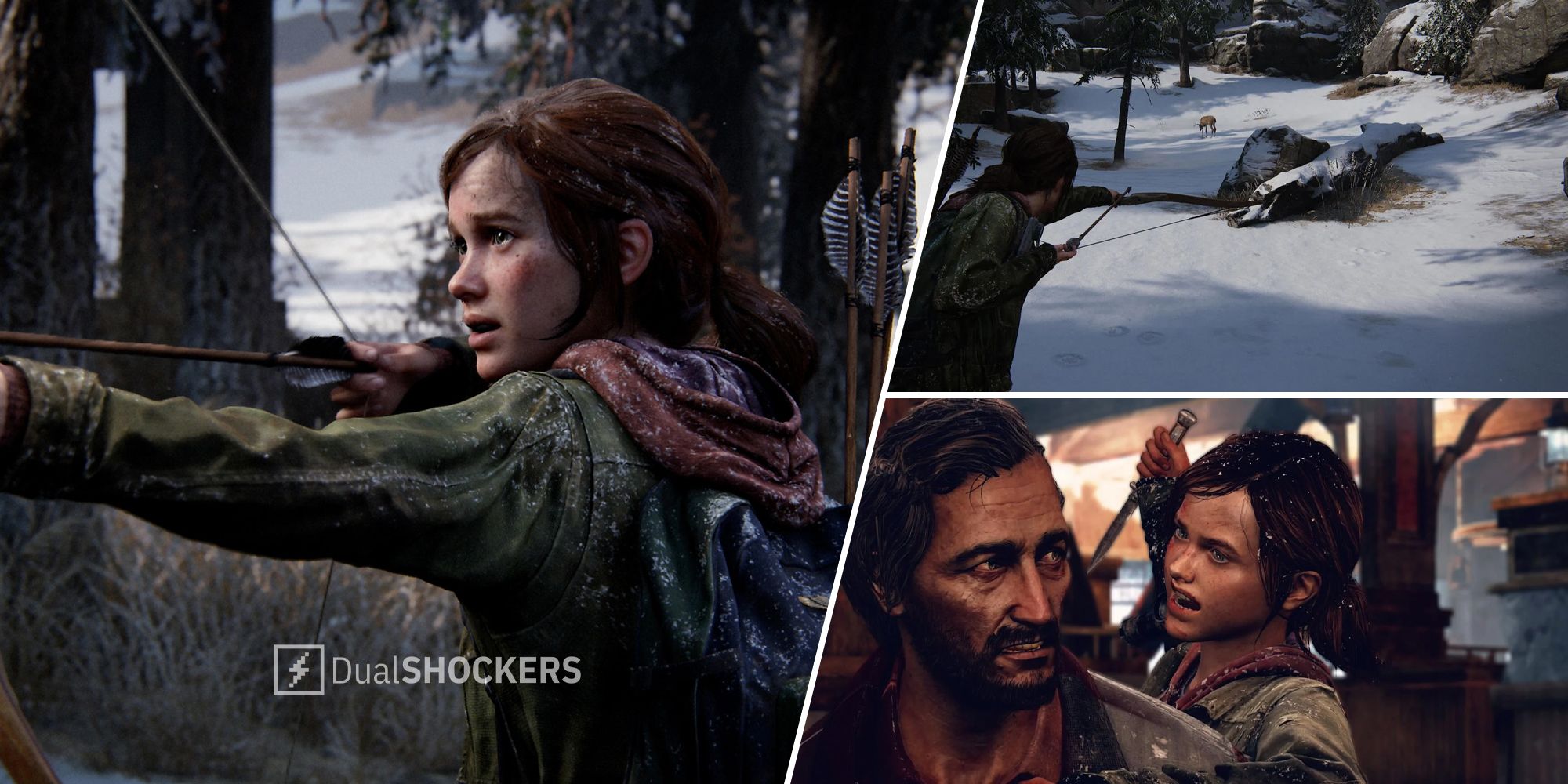
.jpg)
